Get PeakVisor App
Sign In
Search by GPS coordinates
- Latitude
- ° ' ''
- Longitude
- ° ' ''
- Units of Length

Yes
Cancel
Share ×

Scan the QR code and open PeakVisor on your phone
❤ Wishlist ×
Choose
Delete
The Hohe Tauern (English: High Tauern) is a mountain range running along southern Austria and into South Tyrol, Italy. The chain comprises no less than 1773 named peaks, forming the southern border of the Austrian states of Salzburg, Carinthia, and Tyrol. Großglockner (3,798 m / 12,461 ft) is the range’s highest and most prominent (2,427 m / 7,963 ft) peak, not to mention the highest mountain in Austria and the second most prominent mountain in the Alps after Mont Blanc (4,808 m / 15,774 ft).
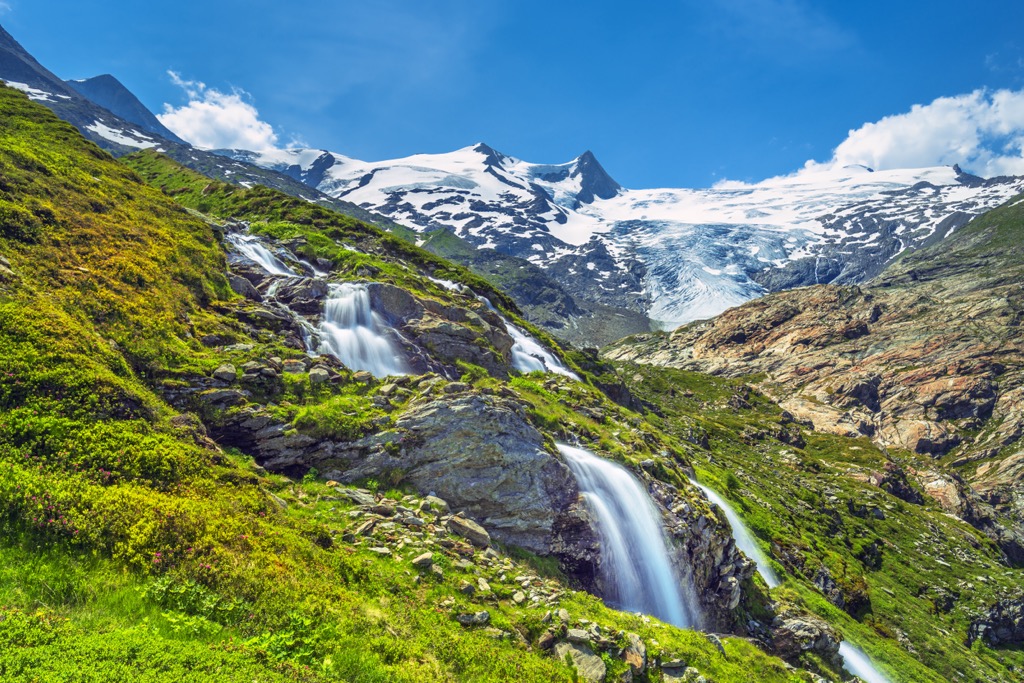
The Hohe Tauern is a mountain chain located in the Central Eastern Alps. The range runs along the southern border of the Austrian states of Salzburg, Carinthia, and Tyrol and extends into South Tyrol, Italy.
The range’s tallest peak is Großglockner (3,798 m / 12,461 ft). It’s the highest point in Austria, the highest in the Alps east of Brenner Pass, and second most prominent after Mont Blanc (4,808 m / 15,774 ft). Austria’s largest glacier, Pasterze, lies on the mountain’s eastern slopes and measures approximately 16 sq km (6 sq mi) in footprint and 4 km (2.5 mi) in length. Großglockner is part of the Glockner Group. Other mountain groups found in the Hohe Tauern range include the Venediger, Granatspitze, Goldberg, and Ankogel groups.
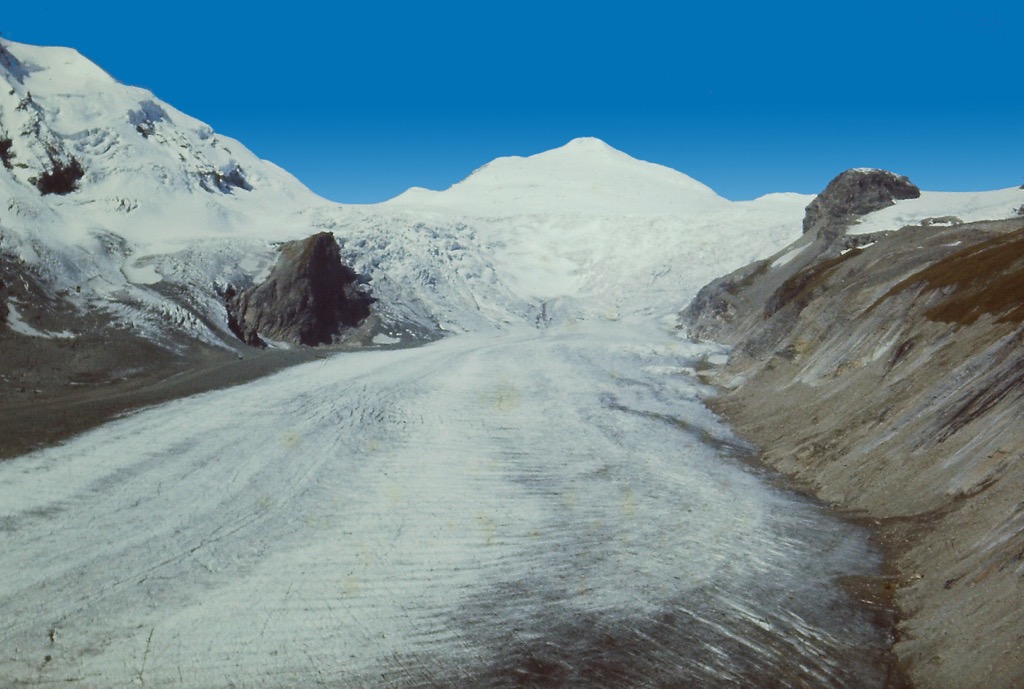
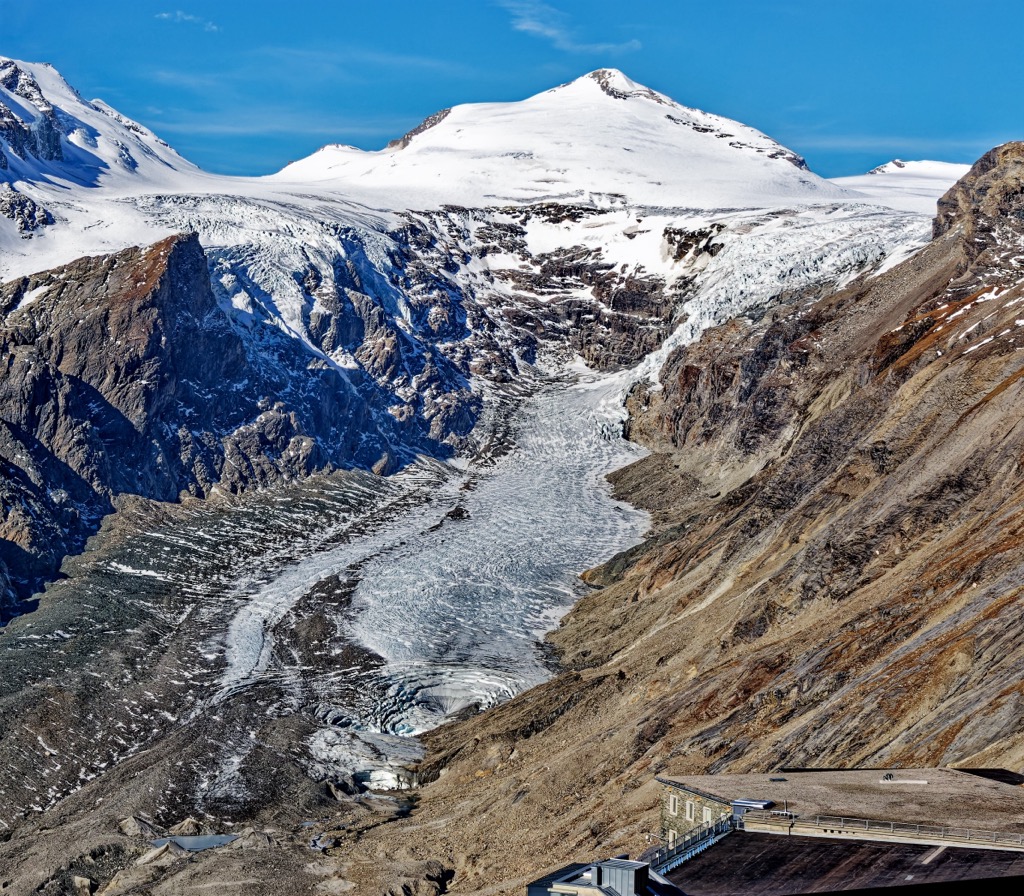
High Tauern National Park spans 1,856 sq km (717 sq mi) and offers an impressive overview of the Hohe Tauern Range. The park is a mecca of alpine hikes and vistas, thick forests, rivers and waterfalls, and is home to the affectionately coined Big Five of the Alps – ibex, chamois, marmot, golden eagles, and bearded vultures.
The national park is an important reservoir within the Alps. It contains over 275 rivers, 57 of which are fed by glaciers, and around 500 glacier-formed lakes. Two scenic roads cut through the park. The picturesque Brenner Pass to the west follows the border between Austria and Italy and is the lowest pass in the region. Austria’s highest paved road, the famous “Großglockner Hochalpenstrasse,” is open from May to October; around a million tourists visit the road annually.
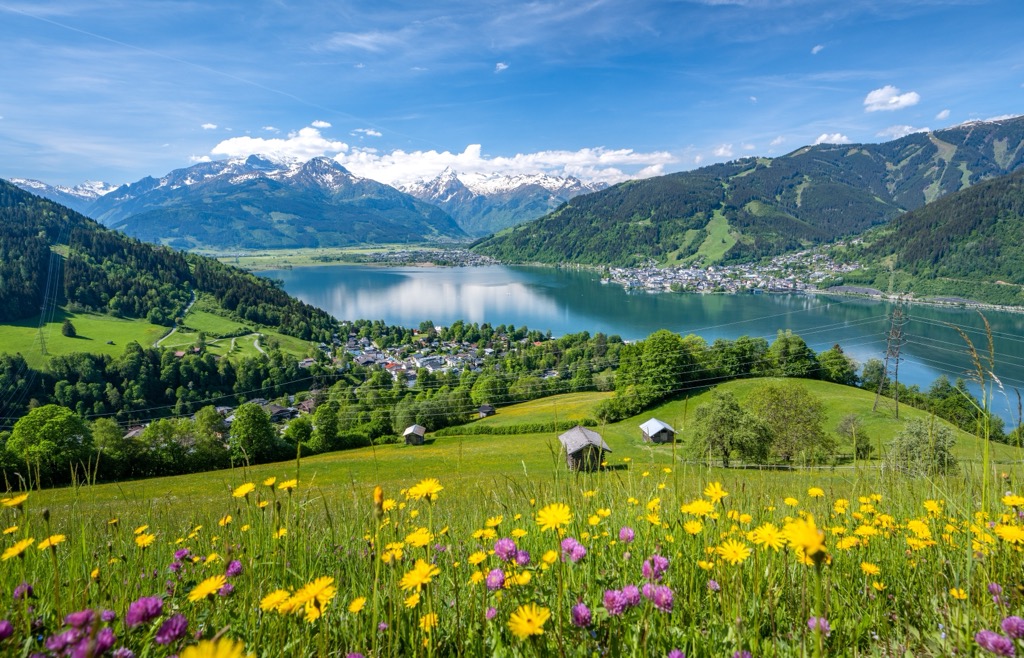
The Alpine Orogeny defines the overarching geology of the Hohe Tauern. During the early Cretaceous era, around 140 million years ago, the African plate drifted north, pushing sediment and folding deposits on the ocean floor over each other.
The Alpine orogeny raised the Alps when the African and Indian plates collided with the Eurasian plate. The majority of mountain building occurred between 65 and 2.5 million years ago. The uplift no longer outpaces the rate of erosion, so the Alps are not considered a growing range.
One of the most significant geologic features of the Hohe Tauern is the Tauern Window, an exposed rock strata offering a unique look at millions of years of geologic processes. Driven by forces deep within the Earth’s core, the planet’s crust shifted and stacked on itself. Over millions of years, strata that would otherwise exist at much lower geologic layers rose to the top as these layers jutted upwards.
The window is composed of four enormous gneiss cores at the center. It is 160 km (99 mi) long and runs from the Katschberg in the east to the Brenner Pass in the west. It overlaps with the Zillertal Alps, Tux Alps, and, among the Hohe Tauern, the Glockner, Granatspitz, Goldberg, and Ankogel groups.
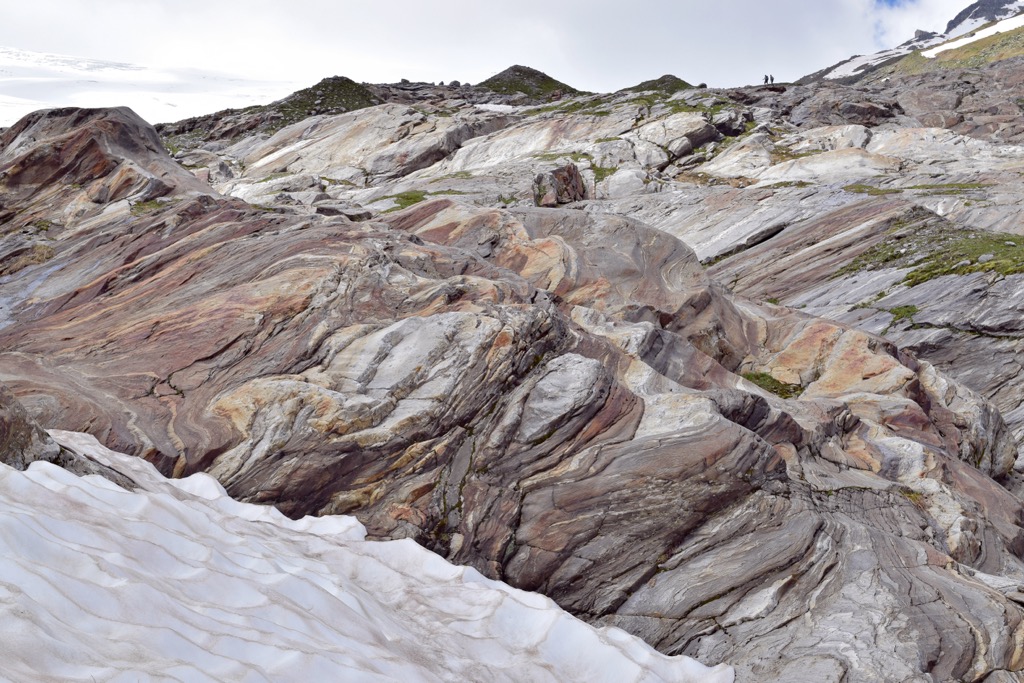
The gneiss developed from solidified magma that was initially granite, granodiorite, and tonalite. The Upper Schist originated from sediment in the basin of the Piemonte Ocean, and the limestone and dolomite in the range formed during the early Mesozoic in the ancient Tethys Sea.
Glaciers carved out U-shaped valleys and cirques during the ice ages. Pyramid-shaped peaks, such as Großglockner's, formed as the result of the formation and movement of cirque glaciers and are sometimes called glacial horns. Like the famous Matterhorn, you’ll often see the name “horn” in the mountains across the German-speaking Alps.
Many glaciers remain today, although they are rapidly shrinking. The Pasterze glacier is roughly 16 sq km (6 sq mi) in size and reaches about 4 km (2.5 mi) in length, making it the largest glacier in the Eastern Alps. Scientists have measured the Pasterze annually since 1879, and from 2006 to 2016, the glacier receded an average of 40 m (131 ft) per year.
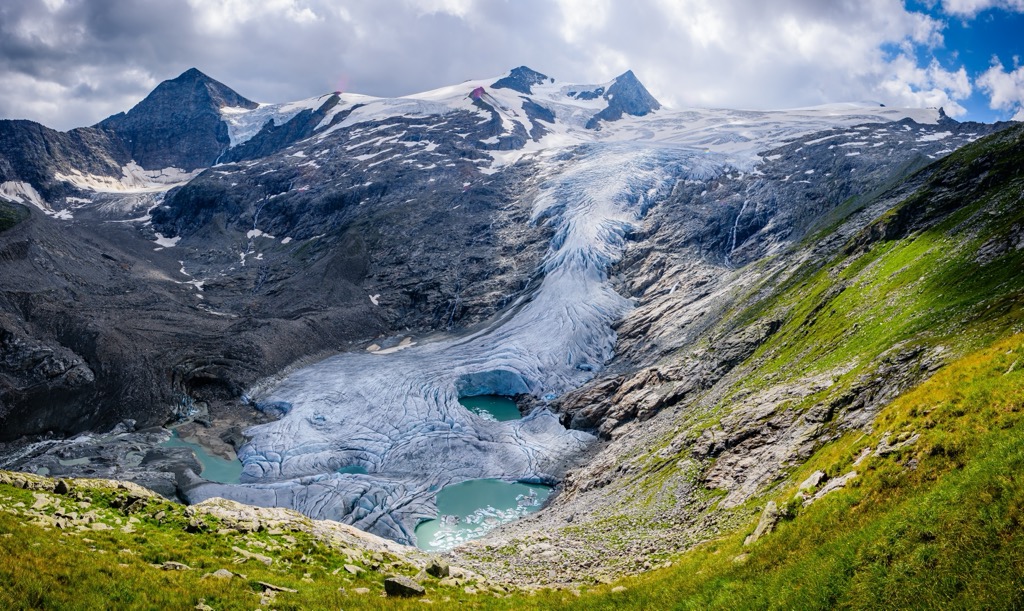
Although the mountains are protected within the national park, gold, iron, limestone, and talc have historically been mined in the region.
The Hohe Tauern National Park lies within the Hohe Tauern and protects a large swath of the range’s robust ecology. The rugged habitats range from valleys to alpine glaciers and are home to a wide array of flora and fauna. Many species have unique adaptations to survive in the dramatic conditions of the Alps.
A few plant species have remained through the ice ages. Edelweiss originated in Central Asia but migrated to the Alps during the last series of ice ages. Glacier buttercups are specialized to high altitude scree and produce thick roots that stabilize both the rocks and the flowers.
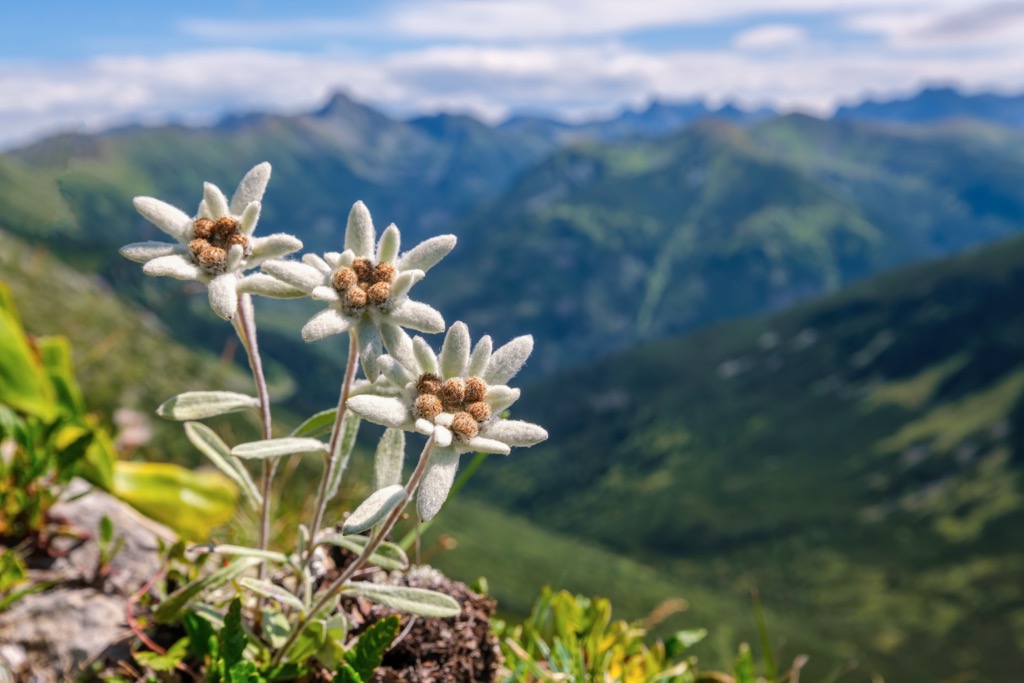
Montane habitat occurs between 700 and 1,600 m (2,300 and 5,250 ft). As elevation increases, deciduous mixed forests transition to mountain spruce forests. Dead trees provide a base for fungi, lichens, and birds, such as the black woodpecker. In the Hohe Tauern, Montane habitat is home to red deer, fox, squirrels, red crossbills, and pygmy owls.
The subalpine habitat exists between 1,600 and 2,300 m (5,250 to 7,545 ft). Here, larch-stone pine forests dominate, although human activity has heavily impacted this habitat. Centuries ago, farmers cleared forests to create grazing areas, altering the proportions of forest cover to alpine meadows. The undergrowth is composed of blueberries and alpine roses. Avian species include black grouse and spotted nutcrackers.
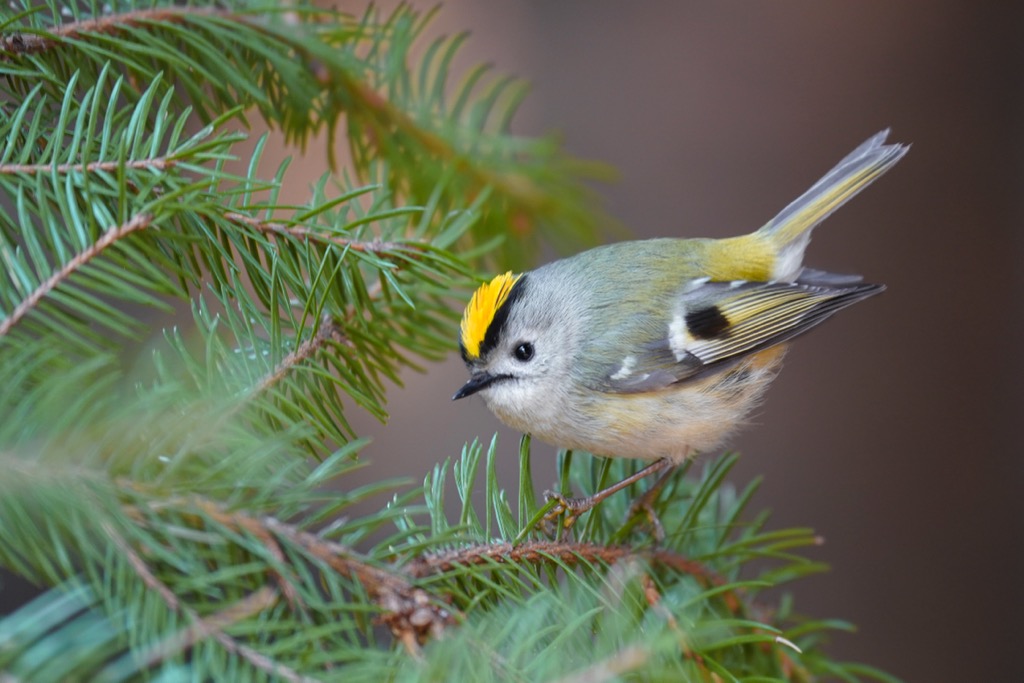
The alpine zone exists between 2,300 and 3,000 m (7,545 to 9,840 ft). Montane grassland supports species like bent sedge, mat grass, mountain arnica, bearded bellflowers, and alpine avens. The alpine is the territory of ibex, chamois, marmots, and alpine salamanders.
The zone over 3,000 m (9,840 ft) features extreme temperatures, high UV radiation, and strong winds. Although there is little vegetation, a select few plants, such as the glacier buttercup, alpine toadflax, and lichens, have adapted to this harsh environment.
Bird species of note in the Hohe Tauern include golden eagles, bearded vultures, griffon vultures, ptarmigans, and the smallest native songbird—the goldcrest, weighing five to six grams. After a successful reintroduction in the 1960s, around 1,100 ibex now thrive within the Hohe Tauern National Park boundaries.
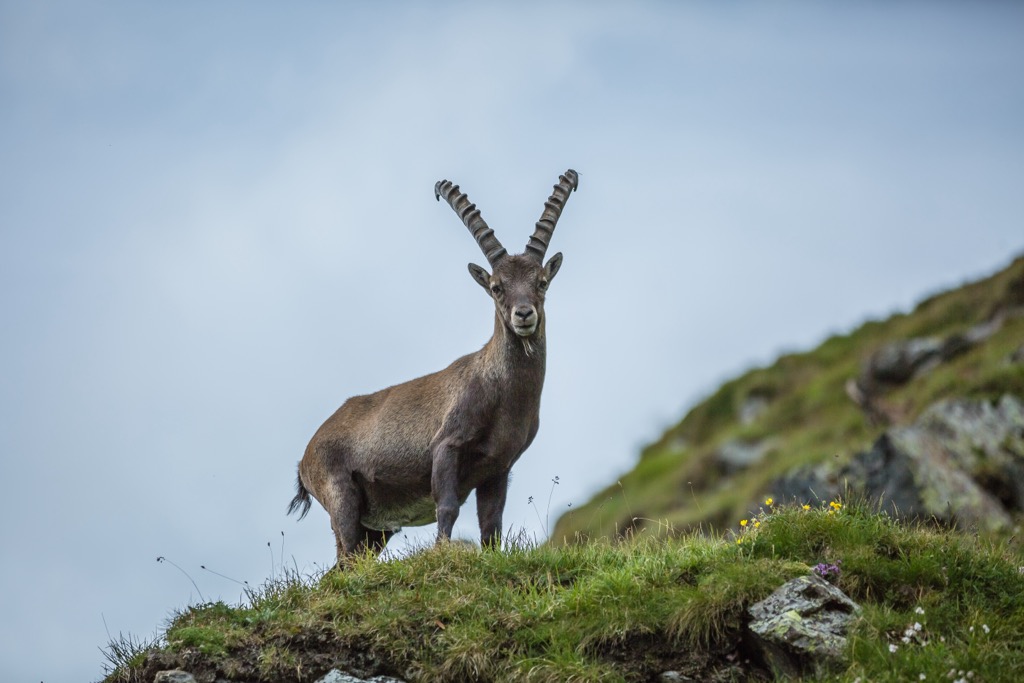
Hohe Tauern National Park was formed between 1981 and 1992 in a joint effort between the states of Carinthia, Salzburg, and Tyrol and was Austria’s first national park.
Efforts to establish a protected area date back to the Austrian monarchy. In 1913, driven by a member of the Salzburg Provincial Parliament named August Prinzinger, the German-Austrian Conservation Park Association purchased 1,100 ha (2,715 acres) in the Amer and Stubach Valleys.
World War I stifled conservation efforts, but post-war efforts to protect the Hohe Tauern picked up where they left off. In 1918, Albert Wirth, a forest industrialist from Carinithia, donated over 4,000 ha (9,885 acres) to the Austrian Alpine Club, which would later form part of the core conservation area.
The German Reich annexed Austria in 1938, and the National Socialist conservation elite chose the area for the Greater German National Park. The director of the Berlin Zoo, Lutz Heck, backed the plan, but it fizzled out at the onset of World War II.
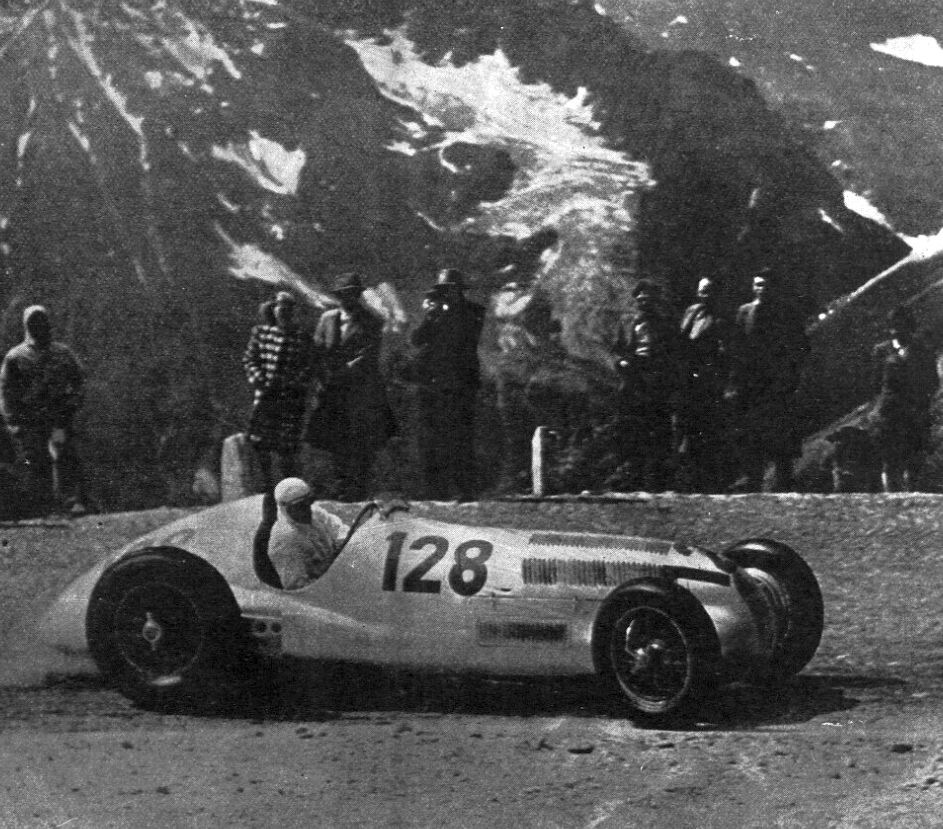
Following WWII, development and conservation clashed. Industries for water power, road construction, oil pipelines, expanding agriculture, and tourism looked to expand while conservation proponents doubled down to protect natural resources.
The Council of Europe declared 1970 the “European Nature Conservation Year.” By 1971, governors of all three states had signed an agreement for the future formation of a park.
In 2006, Salzburg and Tyrol received a “category II” listing from IUCN. The designation reflects that the park has both a core zone that develops without human disruption and an outer zone that allows for traditional cultivation and supports land-use agreements between the national park, landowners, and hunters.
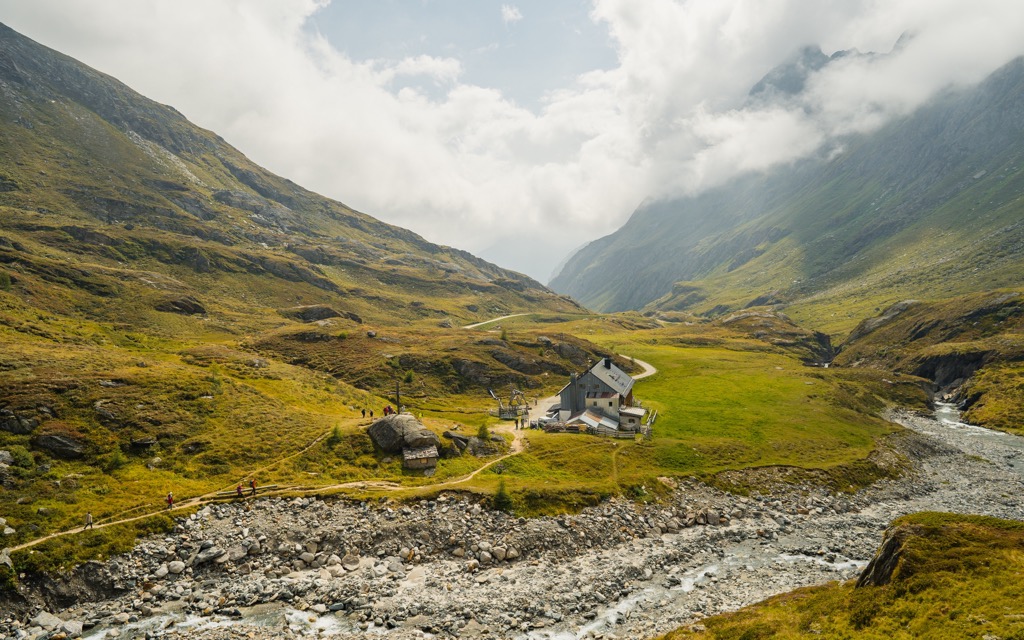
Beyond the park's formation, Gloßglockner was an important hub in the early days of alpinism.
The story begins with Belsazar Haquet, a science professor from Ljubljana, who traveled to the area and wrote a book in 1783 that claimed the Großglockner had never seen an ascent.
Franz Xaxer Salm-Reifferscheidt, a local bishop, went on to organize an expedition to scout an ascent via the Leitertal Valley. He sent two locals, Martin and Sepp Klotz, scouting ahead and followed after. The first attempt with the bishop and a larger crew took place 16 years after Haquet’s initial voyage in August 1799.
The team built a hut for the bishop to stay in and erected a cross near the top. However, they did not correctly place the cross at the true summit. The church pushed for a second attempt the following year, where the cross was successfully erected.
Corbinia Steinberger made the first ascent by a single climber in 1851, while the first winter ascent was made in early 1875.

The Hohe Tauern encompasses well-known mountain groups such as Glockner and Venediger, much of which are protected by the Hohe Tauern National Park, and there is no shortage of hikes, ski touring, and outdoor recreation. With its formidable height and panoramic views, Großglockner draws many avid mountaineers.
The mountain hut system offers the opportunity for several multi-day trips, suitable for both summer hiking and winter ski-touring.
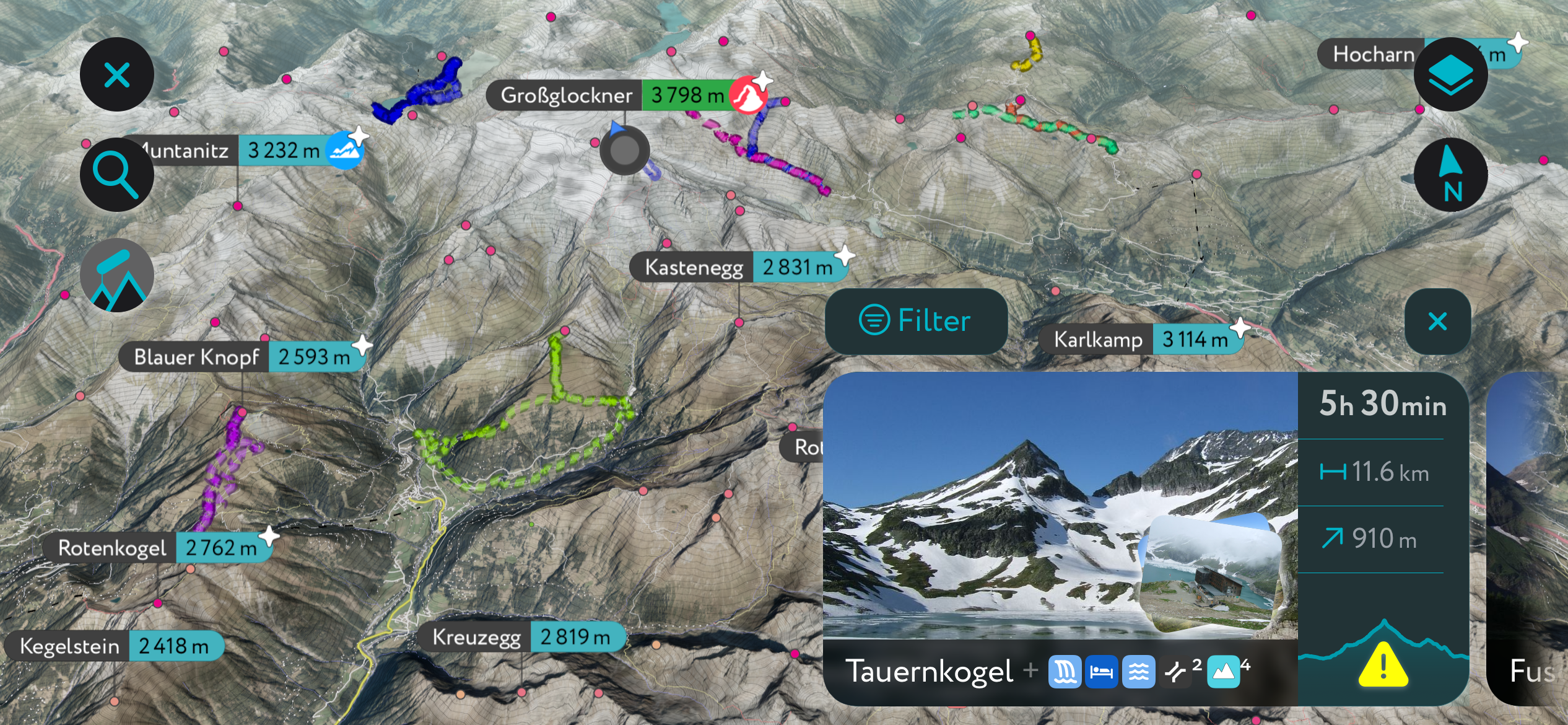
Need fresh ideas for your next outdoor adventure? The PeakVisor App provides the latest regional maps and information, helping you get the lowdown on your local area.
Download the PeakVisor App for up-to-date weather reports in any destination across the Alps, including snow depths. Plus, we've been hard at work adding the details of hundreds of mountain huts, with information on opening hours, overnight accommodation, and dining options.
The tallest peak in the range, Großglockner, attracts summer hikers and winter ski-tourers.
For hiking, one of the popular routes to summit Großglockner leaves from Lucknerhaus. It is an 18 km (11 mi) out-and-back trail with 2,350 m (7,715 ft) elevation gain. Along the way, the trail passes the Stüdnlhütte via the Lucknerhütte, then the Erzherzog-Johann-Hütte via the Ködnitzkees before summiting.
Climbers can complete the route in one day, but many stay overnight at Stüdnlhütte and/or Erzherzog-Johann-Hütte. The route includes a via ferrata and glacier crossing, requiring alpine experience and proper equipment to undertake safely.
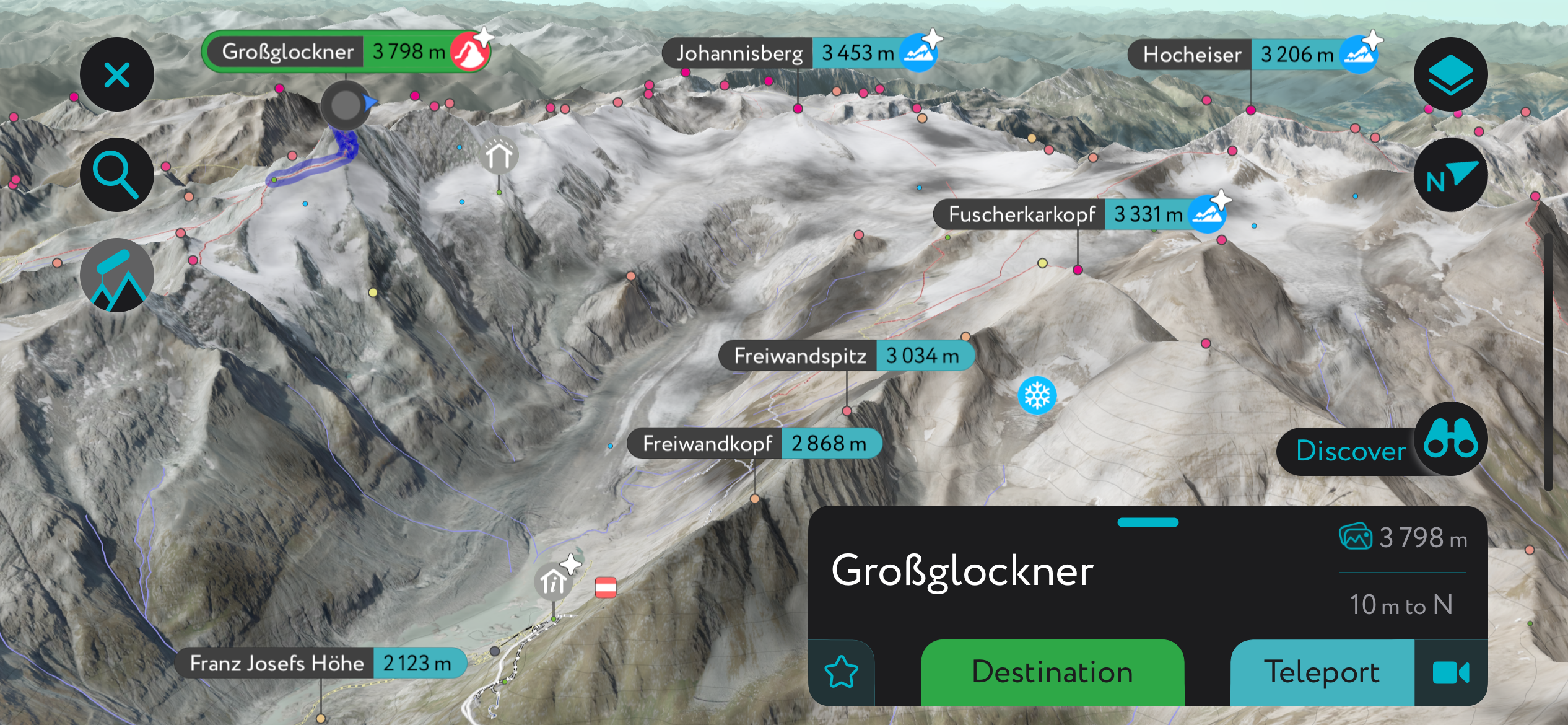
A ski-touring option includes circumnavigating the peak. The tour is stunning but requires perfect conditions. Contact huts in advance to check whether glaciers, particularly Teufelskampkees, have enough snow cover to avoid the risk of crevasses and ensure that avalanche conditions are safe and visibility is good.
The ski route is 12.8 km (8 mi) with 1,800 m (5,905 ft) elevation gain and takes eight hours. It departs from Stüdlhütte, passes Romariswand saddle with an option to climb Romariswandköpfe, and descends to the valley below Pasterze glacier before beginning the long ascent.
The option to summit Großglockner exists if conditions allow. Depending on conditions, ski-tourers might be able to follow the rope-supported ridge below the Adlersruhe to the Ködnitzkees. The final step is a descent down wide slopes with the choice to return to Stüdlhütte or head directly to Lucknerhaus.
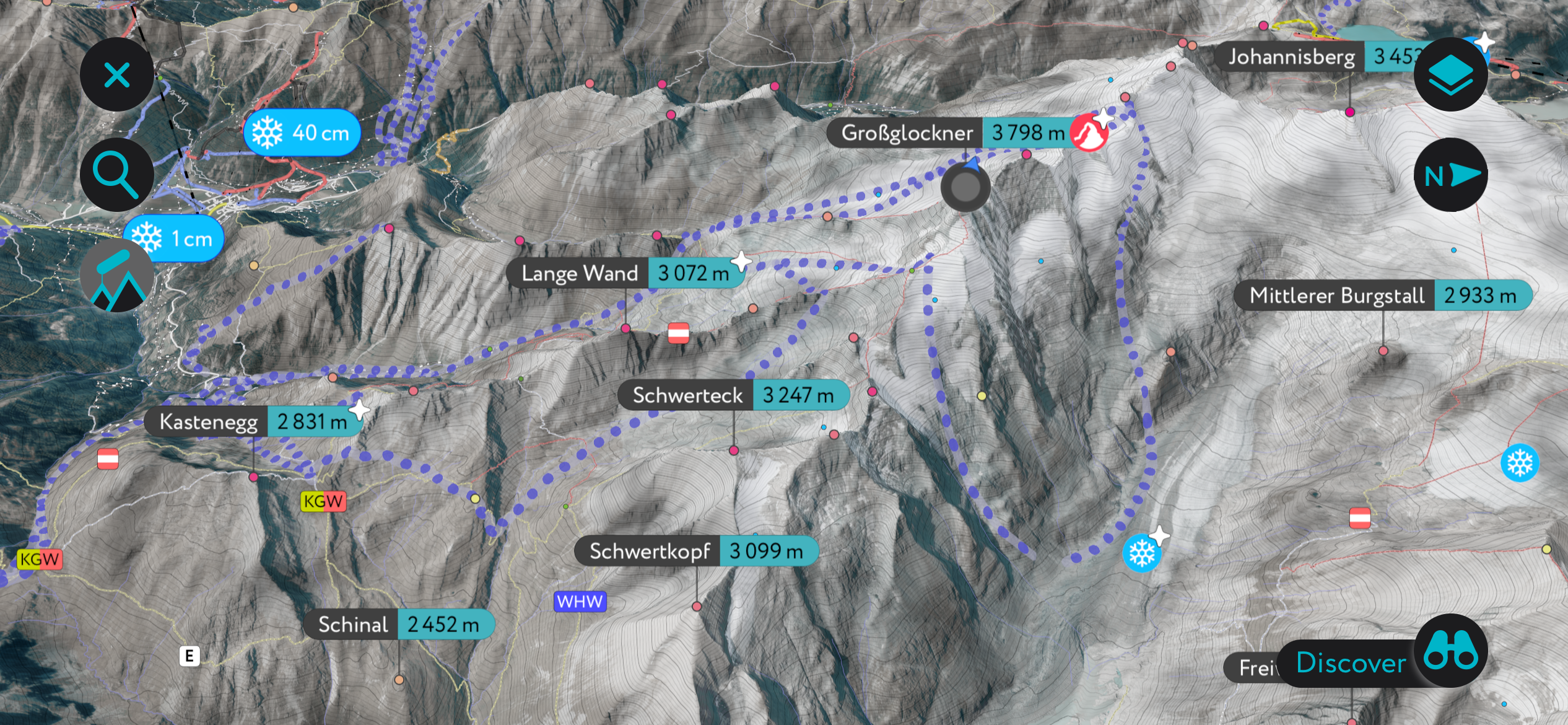
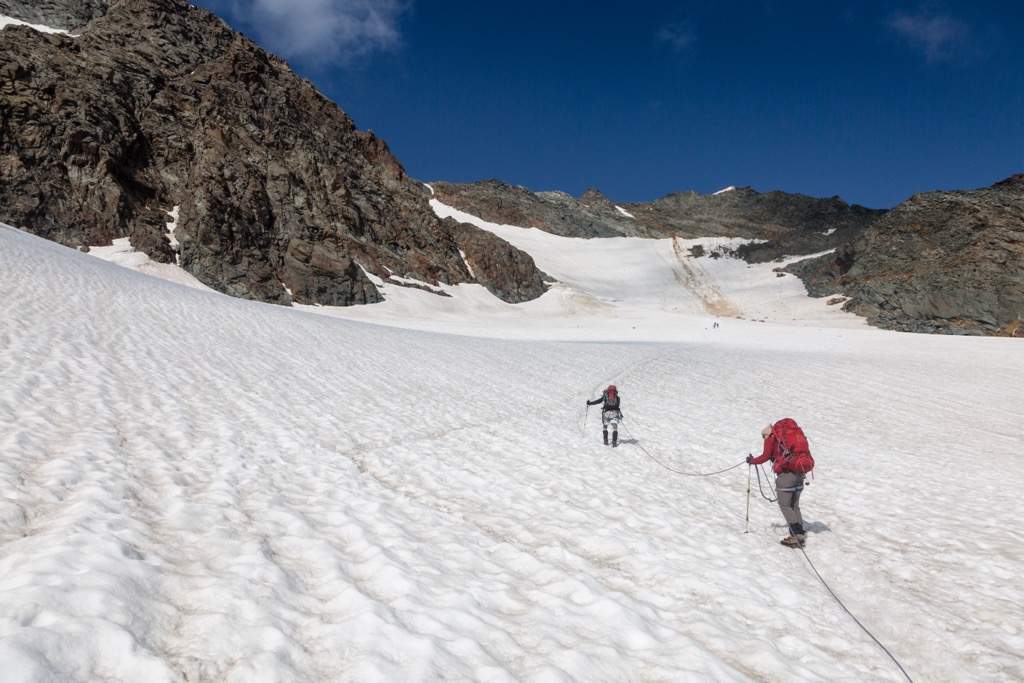
Although many variations exist, here is a sample seven-day tour of the Glockner Group in Hohe Tauern National Park outlined by the Austrian Alpine Association. The route is for experienced hikers; those less experienced may want to hire a guide. Although this route can be modified with easier trails or entered from various points, it begins and ends at Kaprun in its complete form.
This route's overnights are at Rudolfshütte, Sudetendeutsche Hütte, Kals am Grossglockner, Salmhütte, Glocknerhaus, and Fusch. The trail is over 100 km (62 mi) and climbs and descends many thousands of meters over the course of the week.
One of the Eastern Alp’s most impressive routes, the Hoch-Tirol Ski Route traverses the Venediger and Glockner Group, covering more than 90 km (56 mi) and over 18,000 m (59,000 ft) of elevation in about six days.
The route begins in Kasern in South Tyrol and crosses the Venediger group before reaching the Großglockner (3,798 m / 12,461 ft), Austria’s tallest peak. The route climbs multiple summits, passes over and around glaciers, and offers convenient overnights in mountain huts. Days range from 11 to 23 km (7 to 14 mi). Ultimately, the route finishes in the village of Kals am Großglockner.
There are six ski resorts in the Glockner Group; one of the best-known is Kitzsteinhorn/Maiskogel-Kaprun. It has 61 km (38 mi) of slopes and was Austria’s first ski resort on a glacier. In 2019, a cable car opened connecting the Kitzsteinhorn and Maiskogel ski resorts. The pistes range from beginner-friendly to expert, with well-known challenges like the steep “Black Mamba.” An abundance of off-piste terrain and a massive snow park makes the resort popular among freeriders and freestylers as well.
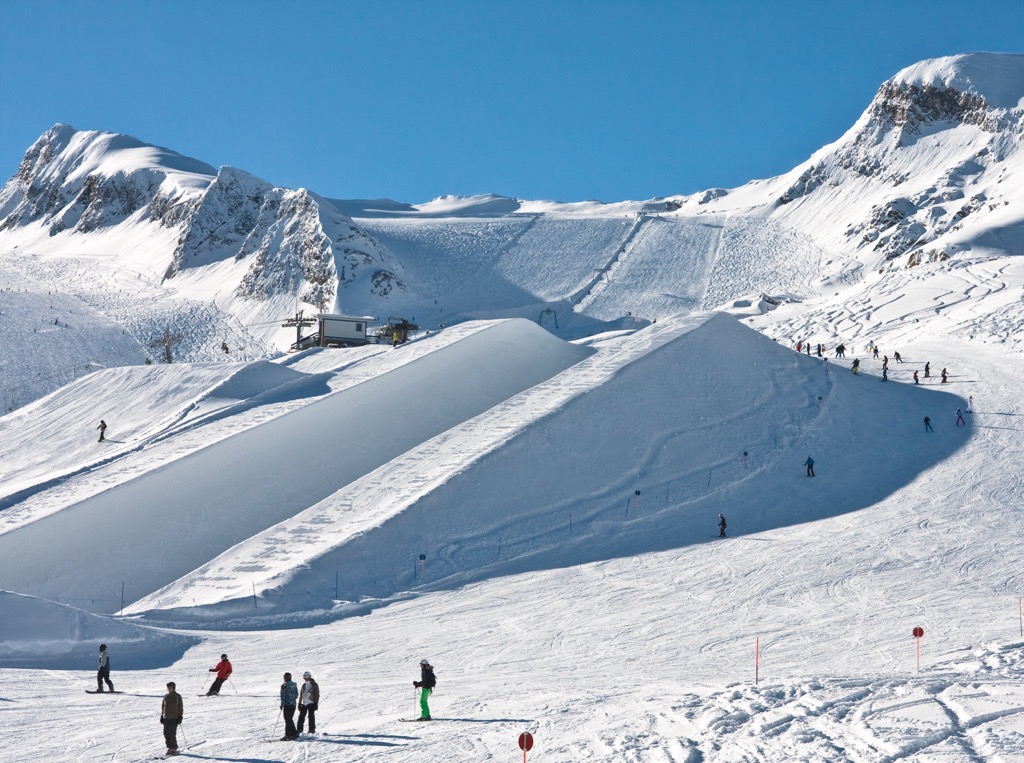
Several towns and ski resorts offer picturesque accommodations at the foot of the Hohe Tauern, including Kals am Großglockner and Matrei in Osttirol. Salzburg and Innsbruck in Austria and Bolzano in Italy are larger cities just over two hours away. Salzburg and Innsbruck have international airports for those coming from further afield.
The small village of Kals am Großglockner has a population of around 1,100 and sits at a prime location at the base of the Großglockner next to Hohe Tauern National Park.
The area boasts 250 km (155 mi) of hiking trails around the valleys, the Kalser cable cars, Glocknerstrasse Road for convenient and scenic inroads to alpine zones, as well as scores of mountain biking trails.
In winter, the Großglockner Resort Kals/Matrei is the largest ski area in East Tyrol. In addition to pistes, there are plenty of ski touring options. From Kals, you can easily ski tour the Lienz Dolomites, Hohe Tauern National Park, alpine valleys in Villgratental, and glacial zones in the northern part of the region.
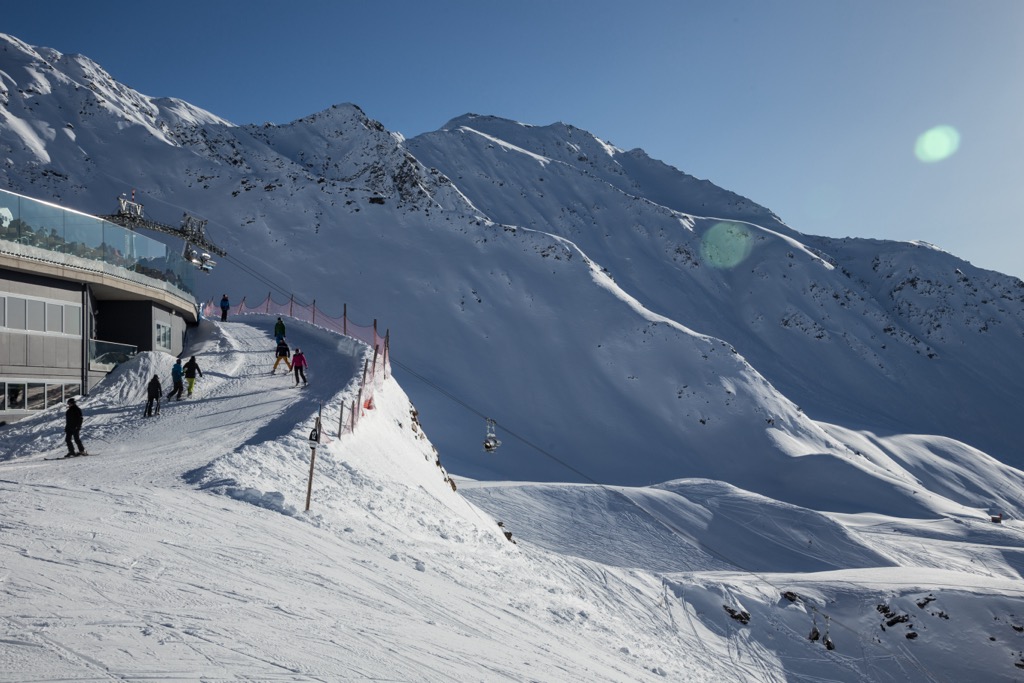
Matrei in Osttirol is in the heart of Hohe Tauern National Park. The town has a population of 5,000 and remains lively throughout the year, with restaurants, shops, and boutiques in the downtown catering to tourists. Weissenstein Castle lies near the town’s gates, the Kienburg ruins are nearby, and historic churches, chapels, and shrines pepper the landscape.
Matrei draws visitors with its access to the outdoors. Trails through the scenic Gaschlößtal Valley open up views of the heavily glaciated Großvenediger. Other routes wind through old larch forests or offer day hikes up to alpine huts. Cycling and mountain biking routes surround the town. In winter, Matrei provides access to the nearby Großglockner Resort, the Osttirol IcePark for artificial ice climbing, and a series of trails for cross-country skiing.

Salzburg is Austria’s fourth largest city and home to just over 150,000 people. It has an international airport and is a UNESCO World Heritage Site. The city is a popular tourist destination with a well-preserved historic center, festivals throughout the year, and copious mountains and lakes nearby.
Upon arriving, you can orient yourself to town with a guided or self-guided tour. A few must-see historical sites include the Salzburg Cathedral, the medieval Hohensalzburg Fortress, and Mozart’s home.
The city hosts numerous festivals, including the Salzburg Festival in July and August and Mozart Week in January. Several elaborate gardens are worth visiting. In just over an hour, visitors can reach the scenic village of Hallstatt on the banks of Lake Hallstatt for a day trip. Salzburg’s proximity to the mountains and its urban amenities offer visitors a cultural experience while working as a base for day hikes or a kick-off point for longer treks.
Salzburg’s downtown is pedestrian-friendly. The city is well connected to the region via buses and trains, making it easy for visitors to get from the urban center into smaller mountain towns.
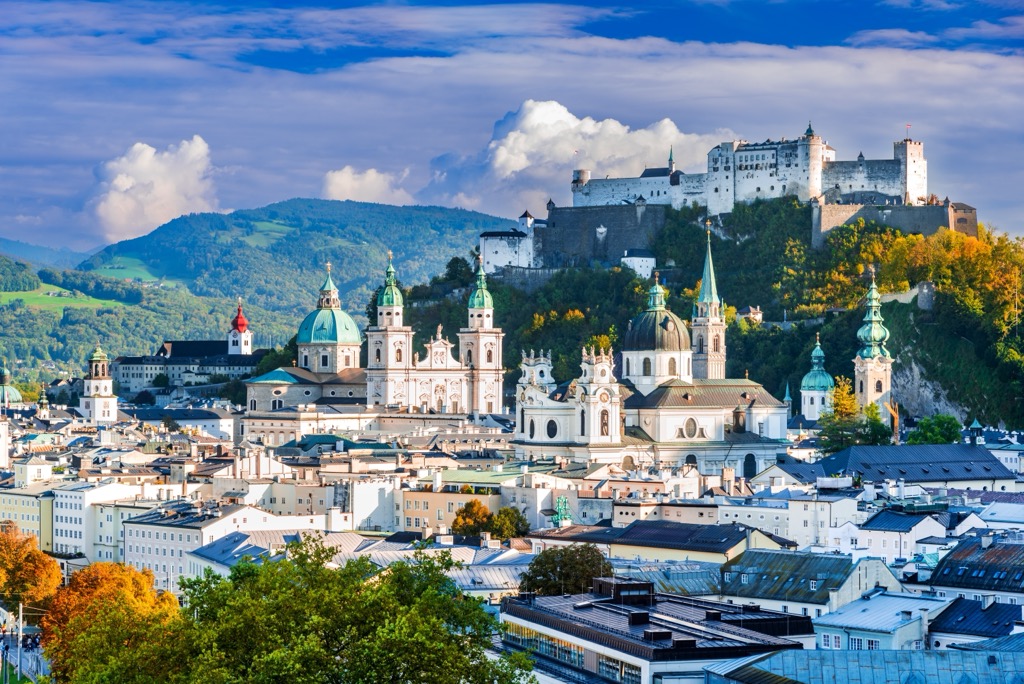
With a population of over 310,000 people, Innsbruck is an excellent destination for culture, nature, and proximity to mountain sports. It is the second-largest city in the Alps, after Grenoble, France, but arguably offers better mountain access. The city lies in a valley with steep mountains rising steeply around it; cable cars like the Nordkette and Patscherkofel provide quick access to the slopes for hiking, skiing, mountain biking, and paragliding.
Visitors can stroll through Old Town or pay a few Euros to climb the Town Tower. The Hofkirche church has 28 bronze statues, while the Cathedral of St. James shows off Baroque architecture. The Schloss fortress, a medieval fortress turned Renaissance castle for Archduke Ferdinand II’s wife, displays armor and artwork. Innsbruck hosted the Winter Olympics in 1964 and 1976 and the 1984 and ‘88 Winter Paralympics; the stadiums still host sports events.
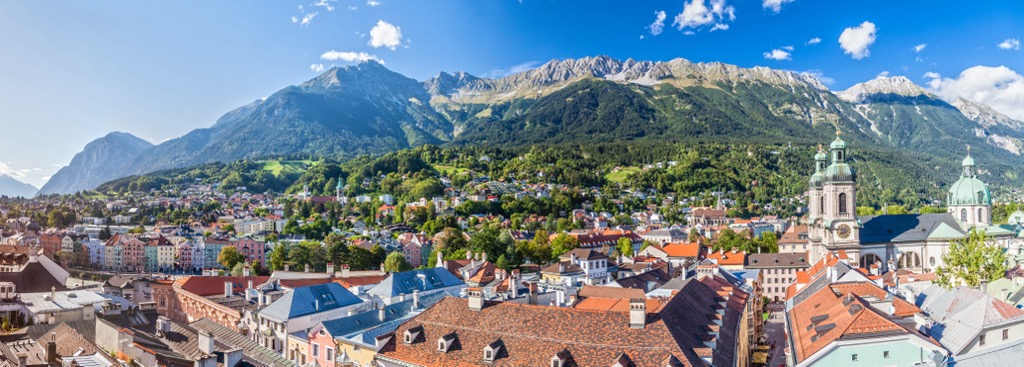
Purchasing an Innsbruck Card is a worthwhile investment if you want to go to multiple museums, ride some cable cars, and have free transport on buses, trams, and bikes. The passes can be purchased for 24, 48, or 72 hours.
Innsbruck is within a 30-minute drive from both Italy and Germany. It is possible to arrive by train from Venice, Munich, Salzburg, and Zurich. The city also has a small but busy international airport and is a launching point for the famous Tyrolian ski resorts.
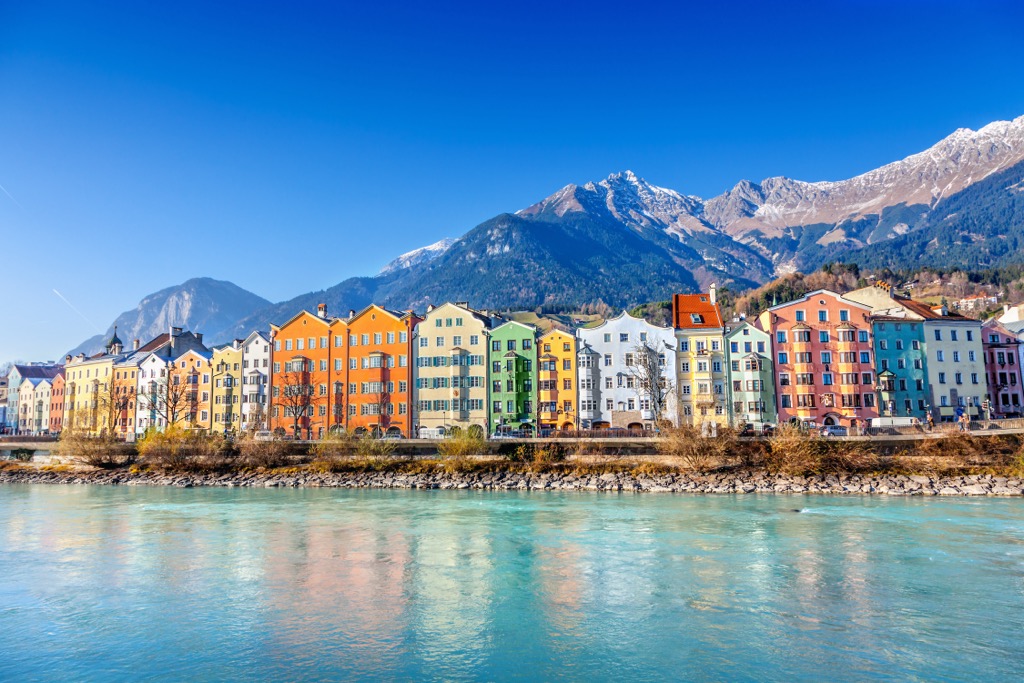
Bolzano is the largest city in South Tyrol, with a population just shy of 110,000. The city is sometimes called the gateway to the Dolomites and has lots to offer regarding access to the mountains and culture. Few cities of this size and cultural diversity have such excellent access. It is rich with German, Italian, and Austrian influences, making it culturally unique in Italy. For these reasons, along with Innsbruck, Austria, and Grenoble, France, Bolzano is one of the capitals of the Alps.
There’s impressive architecture, such as the largest Gothic church in South Tyrol and the Franciscan Friary. In winter, the city’s historic center houses Italy’s largest Christmas market. The Archeological Museum in town details the region's history dating back to the Stone Age.
Surrounded by mountains, you can take the Funivia Colle-Bolzano cable car up to Colle dei Contadini, a village about an hour’s walk from the city. The Dolomites are nearby, offering everything from easy hikes around Lake Garda to more challenging summit hikes.
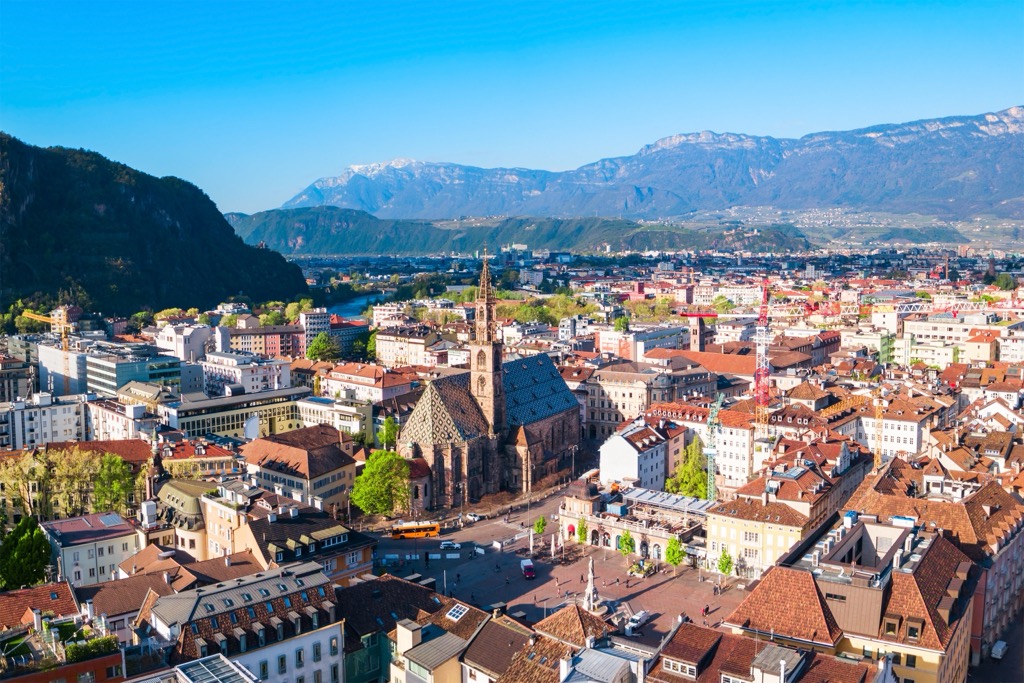
Explore Hohe Tauern with the PeakVisor 3D Map and identify its summits.








